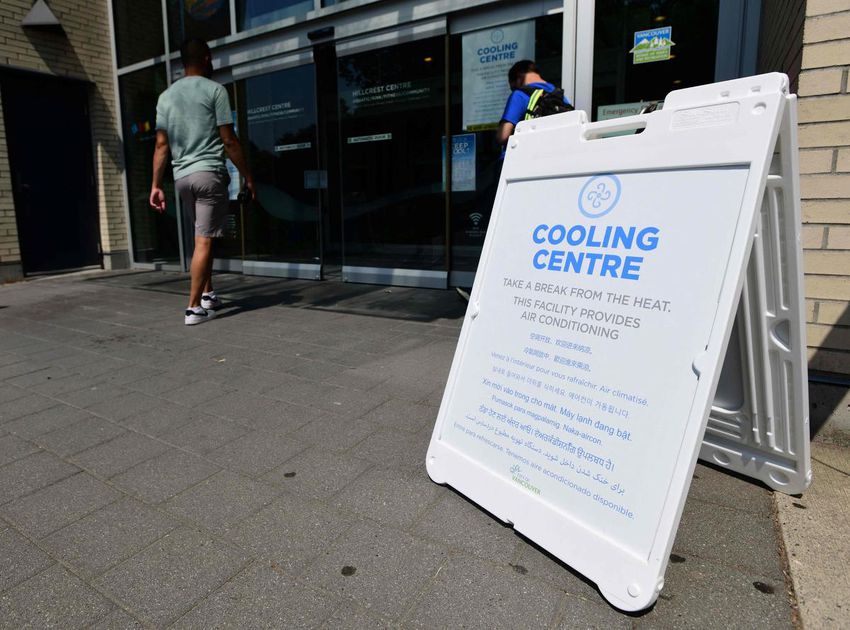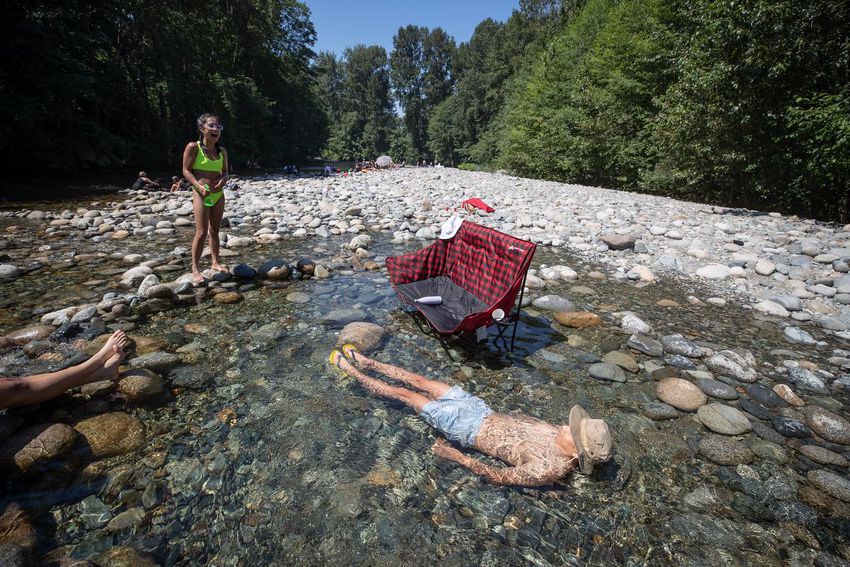It’s floods that lead to repairs costing billions of dollars. It’s fires that burn images of charred buildings and communities into our minds.
But of all the extreme weather events made more likely by climate change, it’s another — extreme heat — that is the deadliest. And a new report by Canadian experts on climate adaptation says there are clear ways to make sure fewer Canadians die of extreme heat in the future.
Without action, the picture painted by a report on irreversible extreme heat from the Intact Center on Climate Adaptation — a University of Waterloo climate adaptation research center — is dire. the documentwhich is meant to instruct individuals, communities and higher levels of government in Canada to prepare for and avoid the worst effects of extreme heat, concluded that 17 million Canadians — including the population of Toronto — live in metropolitan areas that the report’s authors regard as at highest risk for extreme heat events.
In the best case scenario, with lower carbon emissions and stable population, the frequency and severity of extreme heat events until 2080 will mean 50 per cent more people are expected to die compared to the past 50 years for heat-related reasons.
In the worst case scenario — high carbon emissions and large population growth — the rate of excess deaths could be 450 per cent greater than in the last 50 years.
Joanna Eykem, managing director of climate-resilient infrastructure at the Intact Center and the lead author of the report, said the high death toll from extreme heat — most recently highlighted by the heat dome in British Columbia that claimed 526 lives in eight days last year — make it apparent why adaptations to extreme heat events are urgently needed. Extreme heat, the report states, is the “silent killer” of climate change — and is avoidable.
“Heat-related deaths are avoidable, with the right action, information and adaptation,” Eyquem told the Star. “That’s something we can avoid.”
It’s not that Canadians have not been exposed to extreme heat before, and suddenly will be. Eyquem explains that instances of extreme heat, usually defined as temperatures above 30 Care already more common as a result of climate change, and are likely only to become more common.
That has direct effects on our health, such as by causing heat stroke in people who can’t avoid the heat, and indirect effects, such as by exacerbating mental-health issues and keeping people indoors and alone.
And heat does not strike equally everywhere. The effects of extreme heat are much worse in urban environments, where concrete absorbs heat and fewer trees and plants are present to cast shade and retain cooling water.
“Not only are (artificial city) surfaces hotter during the day because they absorb all that solar heat, they give it out at night so we don’t get this cooling effect overnight,” she said. “That’s what we call this heat-island effect in cities.”
According to the report, urban environments can be 10 to 15 degrees hotter than rural areas on the same day for these reasons.
Older people, people with chronic conditions and people who live far away from green spaces are the most likely to be affected.
Fifteen metropolitan areas were identified as most at-risk for extreme heat in the future: Kelowna, Lethbridge, Regina, Saskatoon, Winnipeg, Windsor, Hamilton, Niagara Falls/St. Catharines, Brantford, London, Ottawa, Toronto, Belleville, Kingston and Montreal. A total of 17 million Canadians lived in these communities, per 2020 Statistics Canada estimates.
The Intact Centre, which consulted 60 experts for its guidance report, came up with 35 recommendations for tackling effects and deaths from extreme heat. It said that even with extreme heat events becoming much more common, deaths may not rise as much if these adaptations take place.
For individuals, the central recommendation is to make a plan for extreme heat in the way they might already have a fire or an earthquake plan. The plan would include noting any vulnerable family members you should check on in person during extreme heat, and identifying a cooling place you can go if your home is not adequately cool.
The report also recommends coming up with ways to passively cool your home if possible, such as with reflective window coverings or increasing plant areas.
The recommendations for property owners and managers also include coming up with an extreme heat plan, as well as playing a more active role in increasing green infrastructure such as trees on their properties, and maintaining designated air-conditioned cool rooms.
Communities are also encouraged to increase tree cover and vegetated areas, as well as to map which areas in the community are most vulnerable to extreme heat, prepare for extreme heat warnings, and provide incentives for owners and tenants to implement shaded areas.
Eyquem said it may not be intuitive for all Canadians to think about extreme heat, especially before the summer has started. But that’s exactly what she thinks we should do: Start thinking of heat as a climate disaster to prepare for in advance.
“I think in Canada we still have a cold climate mentality, we’re more worried about heating than cooling,” she said. “But that’s going to shift in the future. We’re warming twice as fast as the rest of the world.”
And, she said, heat is a good example of how climate change is not only an issue with carbon emissions and preventing environmental disaster.
“It’s framed as an environment issue,” she said. “But really it’s a health issue. There’s a lack of awareness that this is going to be important going forward for our health.”
JOIN THE CONVERSATION

